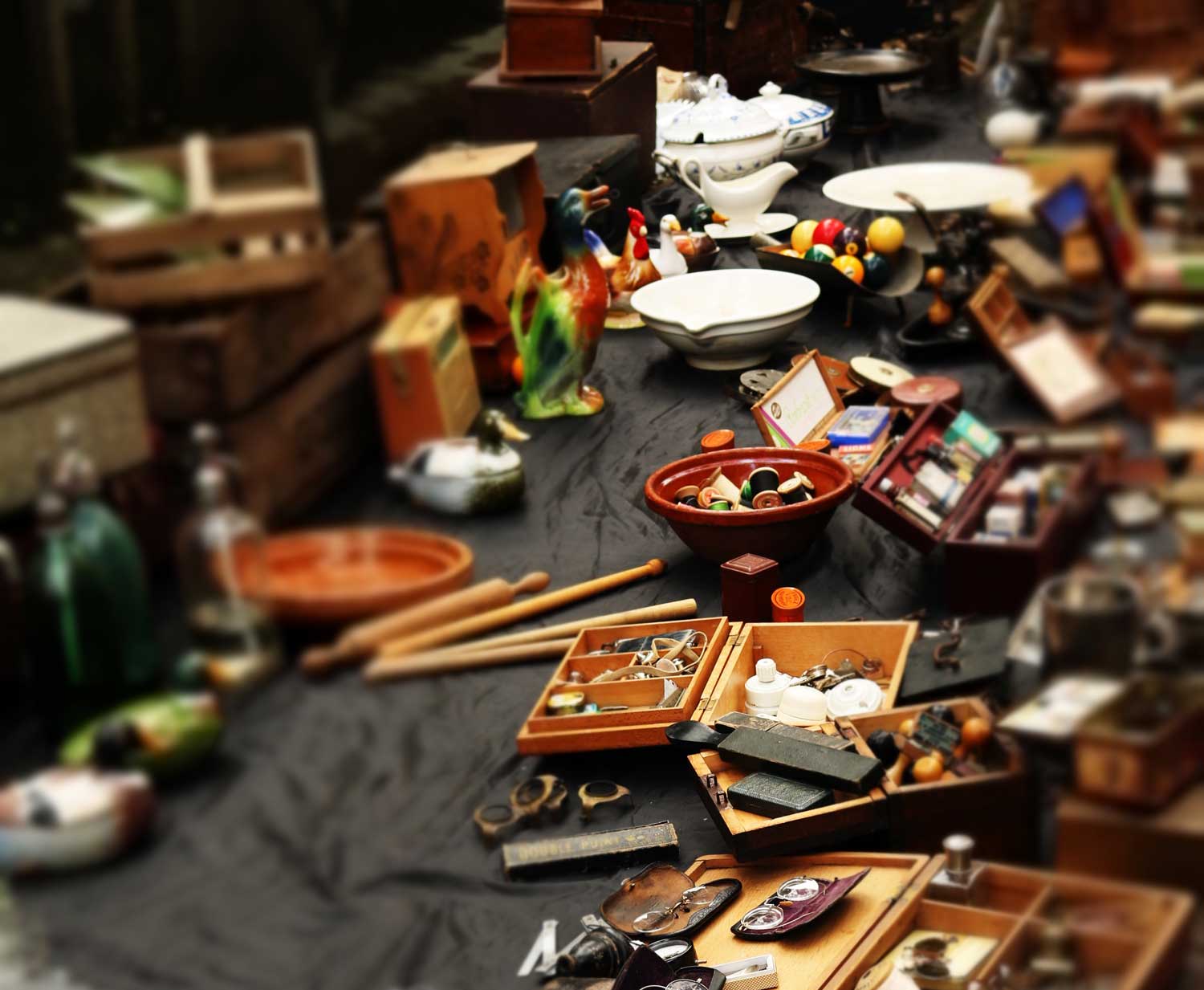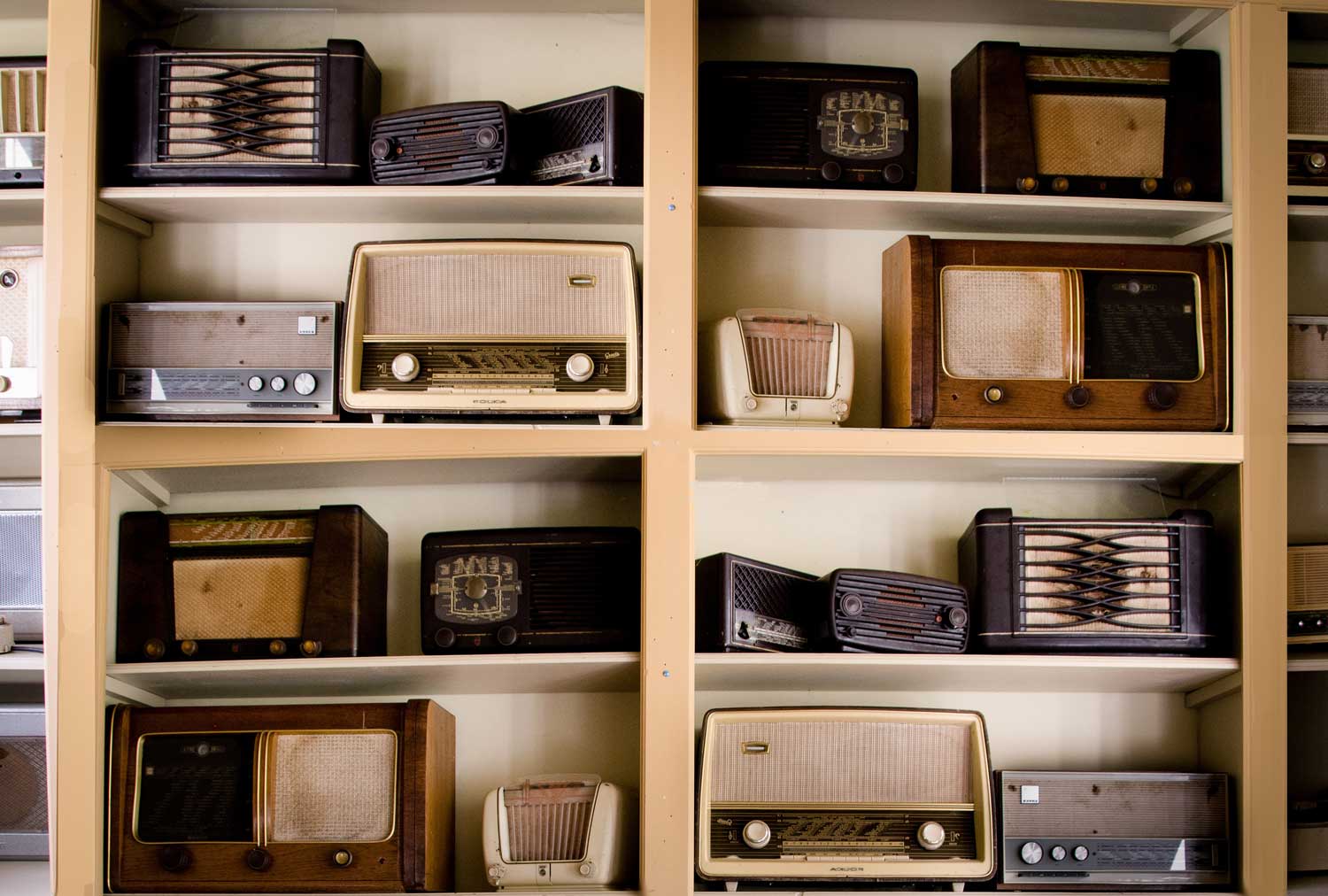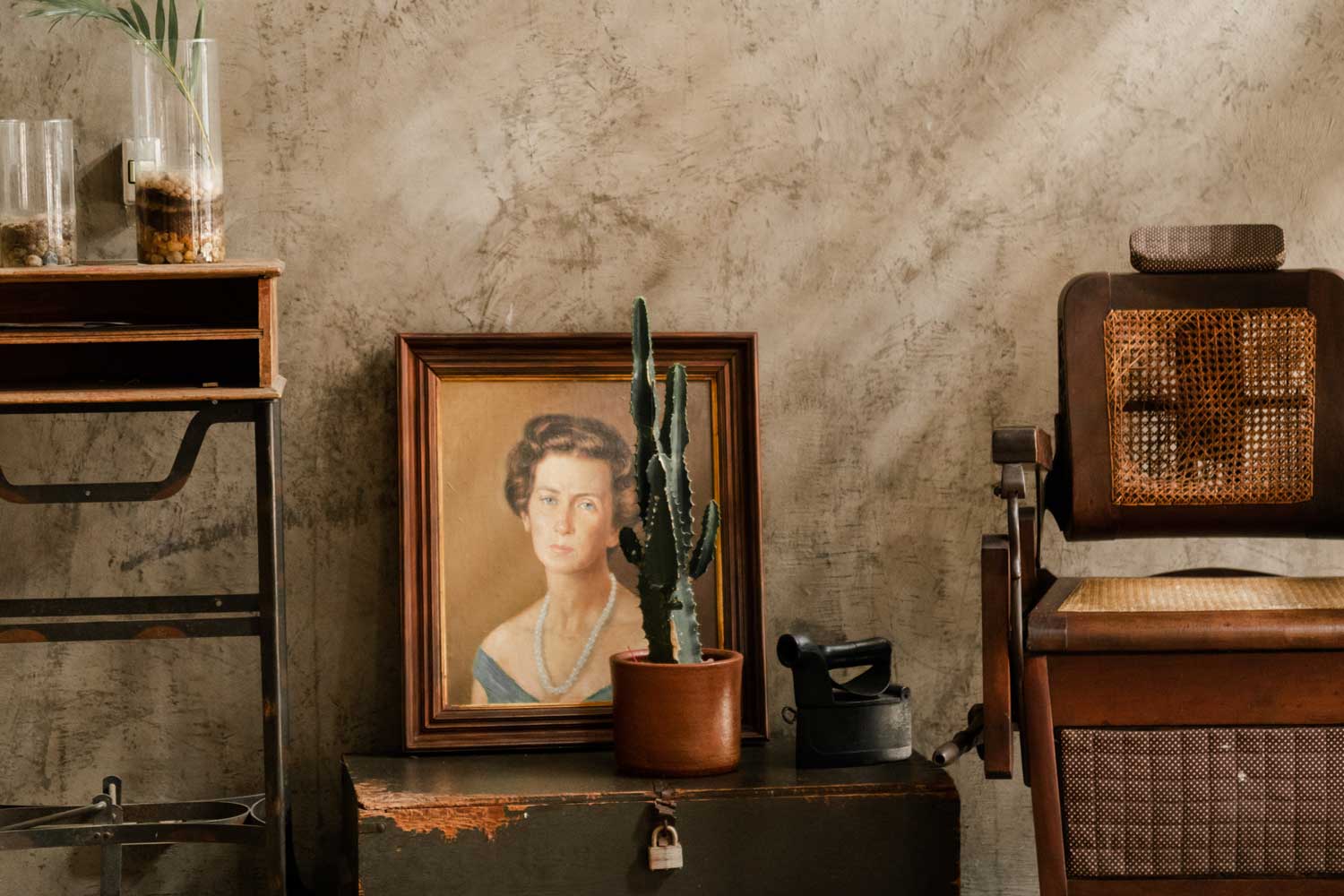9 Step Guide to Decluttering Sentimental Items the Right Way
If you’ve started your downsizing process, you’ve already discovered that having less is a lot of work. Changing your lifestyle to live more simply takes time and effort.
Decluttering sentimental items can be an area where many of us get stuck. Things we have a deep-seated emotional attachment to are hard to part with.

When my husband and I decided to downsize from 1,100 square feet to an RV and then a boat, we looked hard at our stuff, especially sentimental clutter.
Here are my tips for your decluttering journey and some ideas to help you part with sentimental items.
1. Do This Before You Declutter Sentimental Items
If you’re just starting to downsize your things, don’t begin with sentimental stuff.
These items will be the most mentally and emotionally taxing category you undertake.
Give yourself some time to hone your tidying skills before diving into the hard stuff.
What To Do Instead
Even though you shouldn’t declutter sentimental items first, do take a rough inventory.
If they’re stored in boxes or the basement, take a stroll down there one weekend. Start reacquainting yourself with these items. Don’t pressure yourself to get rid of anything. Just enjoy holding and looking at the things.
Why This is Important
We get excited when we see things we forgot we have or items that bring back old memories. This is especially true if it’s been years or decades since we’ve unboxed something.
To think we can take a journey of this magnitude through our things and immediately decide if we want to let go of them is irrational. It’s too much strain on our emotions.
Enjoy your trip down memory lane, and we’ll worry about what to do with the items later.
PRO TIP: As you declutter areas of your home, you will come across other sentimental items. Have a designated storage space to put them until you are ready to start sorting this category.
2. How to Decide What Items to Keep
Everyone is going to be different. Deciding what you keep will be directly correlated to how much you have. How much you have will depend on:
- your age – how long have you been collecting things?
- size of your space – do you need your items to fit in a basement, an extra closet, or a one-bedroom apartment?
- size of your household – everyone will have different things that are sentimental to them
If you have kids, you are going to have additional sentimental items. If your parents or grandparents are no longer with you, you’ll likely have another collection of things.
Some of us will have more space to display items. Suppose you are living in a studio apartment or traveling in an RV. In that case, you might have little to no room for sentimental decor.
As with your entire downsizing process, the most important thing you do is to have a goal.
Setting a Downsizing Goal
Once you have gathered all your items, decide what that goal is before you start digging in. Do you want to get ten bins down to two? Or maybe you want to remove the need for a storage unit.
Make sure you have a measurable goal to strive for throughout the process. This will be key to motivating you to make more challenging decisions.
PRO TIP: Be realistic when setting your goal. If you aim too high, you set yourself up to be disappointed when really all progress is a good thing. Set a goal you feel you can achieve. You can always set a more ambitious goal later.
3. Identify Your Sentimental Attachments
Our emotional relationships with our things can be complicated. Sometimes, it’s hard to pinpoint what draws us to an object and makes us question letting it go. Even if we don’t find it useful and it doesn’t bring us any emotional value.

Try This Exercise
Make a list of your sentimental items as you’re going through them. Keeping them digitally on your phone allows you to easily organize the list and remind yourself of what you have.
When you have downtime on the couch or before bed at night, review your sentimental items list. Continue to sort it, and make notes of plans for the items on the list.
Our brains are amazing machines. The work that happens while you are sleeping will keep you moving down your path to declutter. Keep reviewing your list of items, and your subconscious will help you solve the problem of what to do with them.
Each time you look at the list, you’ll have more certainty around your emotions toward the object. This will make you better equipped to make a final decision for each item.
PRO TIP: If you’re stumped on how you feel about your sentimental items, I highly recommend you read The Life-Changing Magic of Tidying Up. If you’re an Audible member, listening while decluttering is a fun way to kick off your downsizing process.
4. How to Display Sentimental Items
Have you started decluttering and downsizing in other areas? Now, you should have the momentum and motivation to tackle sentimental objects.
Start with items you know you want to keep. If they aren’t already on display or in use, how can you change that?
These days, there are some creative ideas for displaying and repurposing sentimental items.
- Imprint your grandma’s collection of recipes onto a tea towel or apron.
- Take the fabric from an out-of-style dress and turn it into a scarf or envelope clutch.
- Use your child’s baby clothes to have a stuffed bear made for your grandchild.
- Have a crib turned into a daybed, bench, or even a porch swing.
- Make a quilt out of a collection of t-shirts from your travels.
Pinterest and Etsy are great places to get ideas and locate people who can help you repurpose things.
For extensive collections, think about displaying just a few items. You’ll get more joy from being able to really see a few of your favorites rather than the whole collection.
- Display pieces from your great aunt’s china pattern by styling a few plates on the wall or hanging the teacups under the kitchen cabinets.
- Create a wall gallery from a collection of the best black-and-white photos of your grandparents.
- Frame a few chosen pieces from a coin collection or put them in an album you can enjoy in the living area.
- Hang a floating box shelf to display a group of favorite trinkets from your dad.
- Display your wedding program or vows in a shadow box, along with your favorite wedding photos and a pressed flower from your bouquet.
Spend time styling these items. You want to display them in a way that is representative of the strong significance they hold to you. If they are worth your space, they are worth your time to create something you can enjoy for years to come.
PRO TIP: Once you have decided to repurpose or display items, set a timeline to get it done. You want to do this as soon as possible so you can start enjoying your items!
5. Choose Quality Over Quantity
“Quality over quantity” is a mantra useful in all areas of downsizing your things. And it makes a valuable guide when dealing with sentimental items.

A lot of experiences leave us with many objects or souvenirs. I had dozens of knickknacks, tickets, and other mementos from my trip to Japan. 80% of those items didn’t hold much significance. Only a few items were things I truly loved. After a mental journey back to Japan and snapping a photo, I let the other items go.
You are the Curator of Your Museum
Famous minimalist Josh Becker has an excellent analogy for describing why it’s better to have fewer sentimental items.
He compares our collection of sentimental items to a museum.
When you walk into an art museum, you don’t see every piece of art ever created. The museum has been meticulously curated.
Someone has taken the time to choose the absolute best selections for the museum.
Do you have numerous items that you inherited from a family member? Put these items together and spend some time with them. When you look at them all together, are there items that hold more precious memories than others? Those are your curated pieces.
The more you group items, the more you’ll be able to whittle down your things based on a ranking system in your mind. Group items by:
Compare the things in each group and select items based on your most substantial memories.
When you style your home with these carefully curated items, you’ll have only the best to remind you of the times and people in your life.
6. How to Let Go
First off, remember that your things don’t hold memories. YOU do.
If you get rid of something, you aren’t throwing away the memory. You shouldn’t feel guilty. Your stuff is better off finding a place where it can be useful than staying buried in your basement.
Maybe it’s a gift you received or an item that belonged to a loved one that is no longer with you. Do you feel like you are dishonoring a friend or loved one by letting that object go? You are not. If this person cares for you, they wouldn’t want you to keep things that aren’t bringing you happiness.

How to Make the Process Easier
Let’s have it one more time for the cheap seats. Objects don’t hold memories. You do.
What can we do to make ourselves feel better about letting go of these items? Take pictures of your things. This relieves the burning thought that you would forget the memories once the object is gone.
Simply taking a picture will remove the pressure and help you tremendously in your downsizing process.
I did this with many oversized items. A wall hanging I made of pictures from our trip to Japan and a wine rack that was the first gift my husband gave me. It was comforting to know I could see those items again if I wanted to.
Save your photos in a digital folder so you’ll have easy access to the images if you want to look back on anything. Still, chances are you won’t ever think about them. And that’s ok!
PRO TIP: If you don’t have space for an entire collection, choose a few of your favorite pieces to keep. Take a photo of the whole collection, and let the rest go.
7. What to Do With Sentimental Items
When you decide to let something go, the next question is what to do with it. We usually have these choices:
- Sell the item
- Give the item to a friend or family member
- Give the item away for free
- Recycle or throw away the item
The first two choices are easier to come to terms with than the last two. We hate to find that our valuables won’t fetch a reasonable selling price (which is usually the case). And we certainly don’t like to see our items go in the trash.
A big reason we keep the amount of stuff we do is because we’re afraid the alternative is the dumpster.
The best thing you can do to aid the downsizing process is to find your sentimental items a home.
Responsibly Donating
Responsibly donating your things will help your emotional well-being during this process. Research the ideas below to find places to donate your different items:
- Charities looking for donated antiques and collectibles.
- People looking for old furniture and other findings to restore and sell. (Local Facebook groups are a good place to start.)
- Museums looking for collectibles to be donated.
Talking to Friends and Family About Sentimental Items
Not all sentimental items are going to hold the same value to people outside of your situation. But maybe you have a decorative object or items from a collection you think a friend or family member might enjoy.
Your family is a good option for re-homing your items if you have unique sentimental things that have value to them as well.
One thing you want to avoid is pawning your stuff off on friends and family members who don’t really need or want it.
To avoid this or any uncomfortable feelings, send an email with several items you are getting rid of. You can say, “if you see something you think you might like to have, let me know.” When you offer several items (sentimental or not), it’s more casual. A setting that isn’t face-to-face will also keep the communication relaxed.
PRO TIP: When an item is beyond restoration or repair, you may have to look at recycling or the trash pile as the last resort. Take a page from Marie Kondo’s book and thank the item for its years of service. Then, allow yourself to let it go.
8. Be Aware of Shifting Items
When you get into a decluttering rhythm, you’ll be tossing things, repurposing items, and finding places to display the things you love.
Be careful of creating duplicates and filling spaces you may have previously decluttered.
If you decide to create a quilt from sentimental fabrics, have it replace another quilt. When you find a spot to display your favorite china pieces, see if you can declutter other decor pieces.

Focus on removing objects that don’t provide the same happiness as your sentimental items.
Often, we have ornamental items that we picked up randomly or things that have been in a spot so long they are overlooked. Switch up your home decor and bring in fewer things that provide more joy.
PRO TIP: When styling an area or room with “new” or repurposed items, remove everything. Start from scratch and only bring back pieces you love.
9. Give Yourself a Break
Getting rid of sentimental items is an emotionally draining process. You’re not always going to have the mental capacity to get the job done.
Don’t plan your decluttering sessions around other mentally tough events. Don’t try to go through items after a long day at work or on a weekend packed with social events.
However, sometimes, you’ll sit down with your things to start decluttering, and it’s just not going to work.
On those days, don’t be afraid to tackle a junk drawer or work on sorting your closet instead. You’ll regain your momentum, and you can work on sentimental items in your next decluttering session.
PRO TIP: Make these sessions as enjoyable as possible. Turn on a good playlist, have some snacks, and enjoy a glass of wine. You are tackling a challenging task, so ensure all your needs are fulfilled before jumping in.
Final Thoughts on Decluttering Sentimental Items
Lastly, downsizing is a process, and sentimental items will be some of your most challenging decisions.

Remember to start inventorying items of sentimental value at the beginning of the decluttering journey. The more you can revisit them throughout the process, the more you’ll improve at identifying the truly important things.
Be patient, but be consistent. You can’t overhaul your emotions overnight. You’ll get there, and it’s worth it when you do.
Want more tips on decluttering?
Check out our guide with ten specific steps to get you started decluttering to downsize your stuff.
Like this post? Save it on Pinterest for later.



